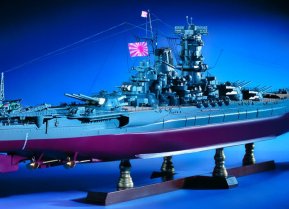Russia's Biggest Nightmare: War with America's Powerful Submarine Fleet
Since their first significant use in World War One, submarines have evolved to become a crucial element of military strategy. The U.S. Navy leads with a versatile submarine force comprising 71 vessels across Ohio, Los Angeles, Seawolf, and Virginia classes, categorized into fast-attack, ballistic missile, and guided missile submarines.
Summary: Since their first significant use in World War One, submarines have evolved to become a crucial element of military strategy. The U.S. Navy leads with a versatile submarine force comprising 71 vessels across Ohio, Los Angeles, Seawolf, and Virginia classes, categorized into fast-attack, ballistic missile, and guided missile submarines. Fast-attack submarines focus on disrupting enemy shipping, while ballistic missile submarines form the backbone of the U.S. maritime nuclear deterrent. Guided missile submarines offer substantial firepower with Tomahawk missiles. Additionally, some submarines support special operations, capable of deploying commandos for strategic missions, enhancing their utility in modern warfare.
U.S. Navy's Submarine Fleet: Unveiling the Power Beneath the Waves
Since their debut in large-scale warfare during World War One, submarines have played an increasingly important role in military operations.
Today, the U.S. Navy possesses the most capable submarine force out there. No nation on Earth, especially Russia or China, would want to have to face them in battle.
The Navy currently operates four classes of submarines (Ohio, Los Angeles, Seawolf, and Virginia), and these four classes fall into three major types: fast-attack submarines, ballistic missile submarines, and guided missile submarines. According to the Navy, the current submarine fleet comprises 71 vessels of all types (53 fast-attack submarines, 14 ballistic-missile submarines, and four guided-missile submarines), with several more under construction.
Each type of submarine is designed for a different mission set, with some occasional overlap. What follows is a breakdown of the capabilities and mission sets of each type.
Submarines and their Capabilities
Let’s begin with the most populous type of submarine in the Navy’s arsenal. The main mission of fast-attack submarines is to take out and disrupt enemy shipping in a time of war. To do so, they carry Tomahawk cruise missiles, UGM-84 Harpoon anti-ship missiles, and Mk48 torpedoes. The Los Angeles, Seawolf, and Virginia classes are all fast-attack subs.
The second type, and arguably most important, is the ballistic missile submarines. The 14 Ohio-class (Trident II configuration) ballistic missile submarines represent the maritime nuclear deterrent of the U.S. Each submarine can carry 24 ballistic missiles with nuclear warheads, representing 54 percent of the military’s nuclear deterrence arsenal.
Finally, the third type of submarine is the guided missile. Although a type with only four Ohio-class (Trident I configuration) ships in the fleet, guided missile submarines bring important firepower to the equation. Each guided missile submarine can fire 154 Tomahawk guided missiles. Back in 1994, the Navy decided that it didn’t need more than 14 subs carrying nuclear weapons. So, the rest of our ships of the type were converted to guided missile subs. Combined, these four ships represent more than 50 percent of the Navy’s submarine vertical launch missile capability.
All three types of submarines are powered by nuclear energy (though only the 14 Ohio-class ballistic missile ships carry nuclear warheads). As such, they can operate indefinitely and are only restricted by the amount of victuals they can carry and routine maintenance requirements.
But there is another important but often overseen capability that submarines bring into the calculation.
Commando Submarines
Some of the submarines, such as the four Ohio-class guided-missile ships and several Virginia-class vessels, can support special operations forces.
These submarines include a reconfigurable torpedo room that can accommodate a large number of special operators, such as Navy SEALs and Green Berets, and their equipment. The combination of commandos and submarines can be very effective in war and peace. Despite their small numbers, special operators can achieve strategic-level outcomes by taking out high-value targets, opening up second fronts, or providing accurate intelligence.
The combination of submarines and special operators isn’t new. Indeed, American and British commandos relied heavily on submarines to ingress and egress from targets in Europe and the Pacific during World War Two.
About the Author
Stavros Atlamazoglou is a seasoned defense journalist specializing in special operations and a Hellenic Army veteran (national service with the 575th Marine Battalion and Army HQ). He holds a BA from Johns Hopkins University and an MA from the Johns Hopkins School of Advanced International Studies (SAIS). His work has been featured in Business Insider, Sandboxx, and SOFREP. Email the author: [email protected].


